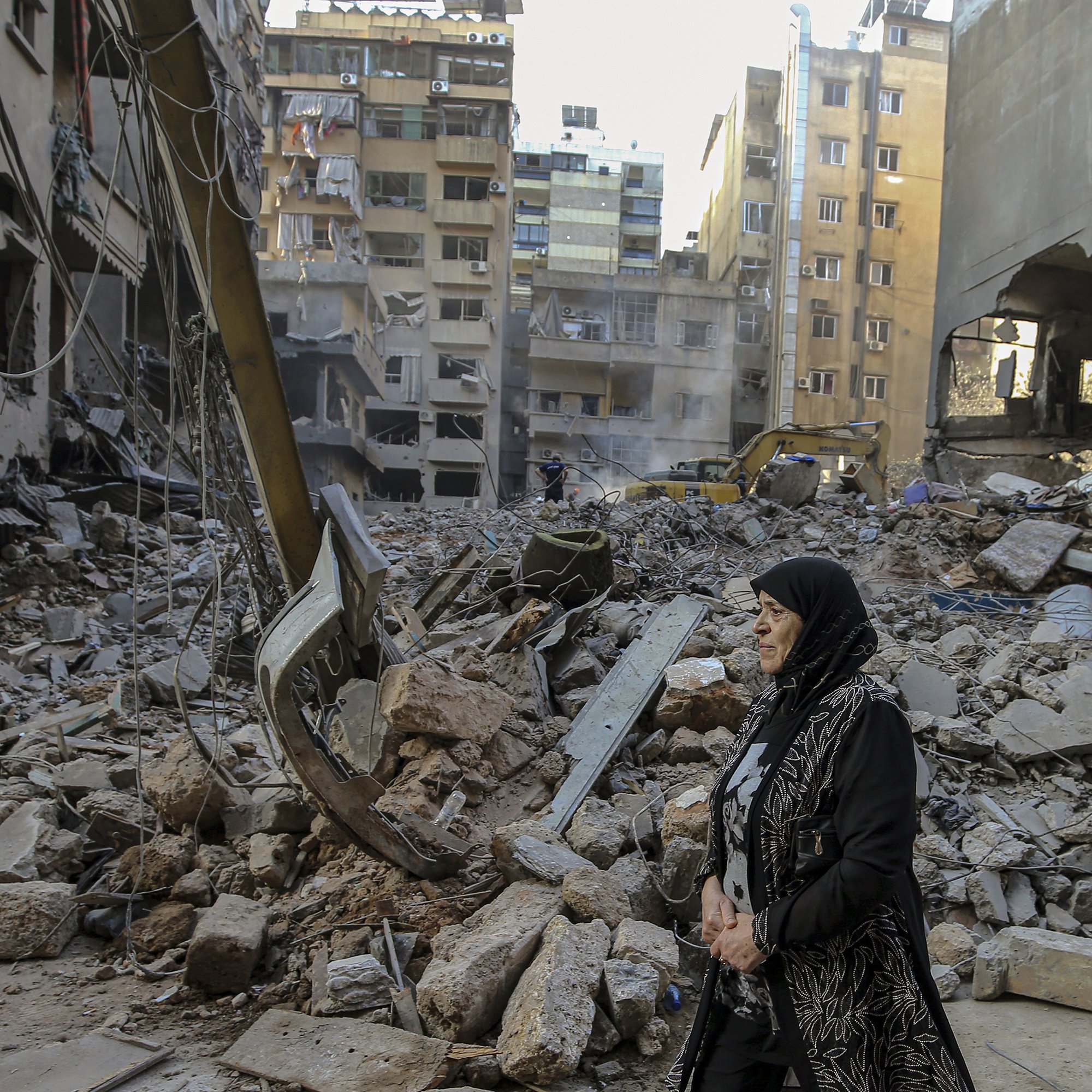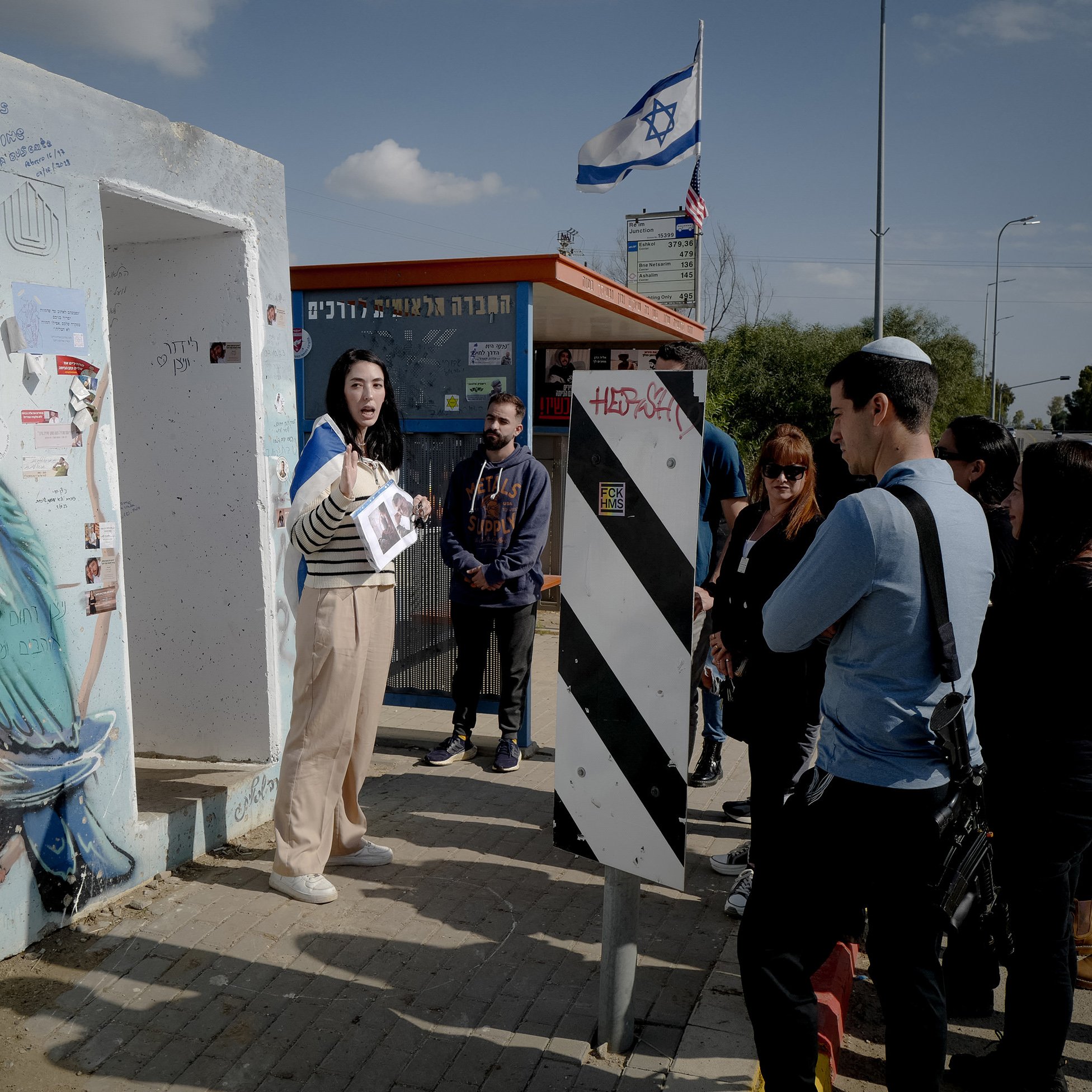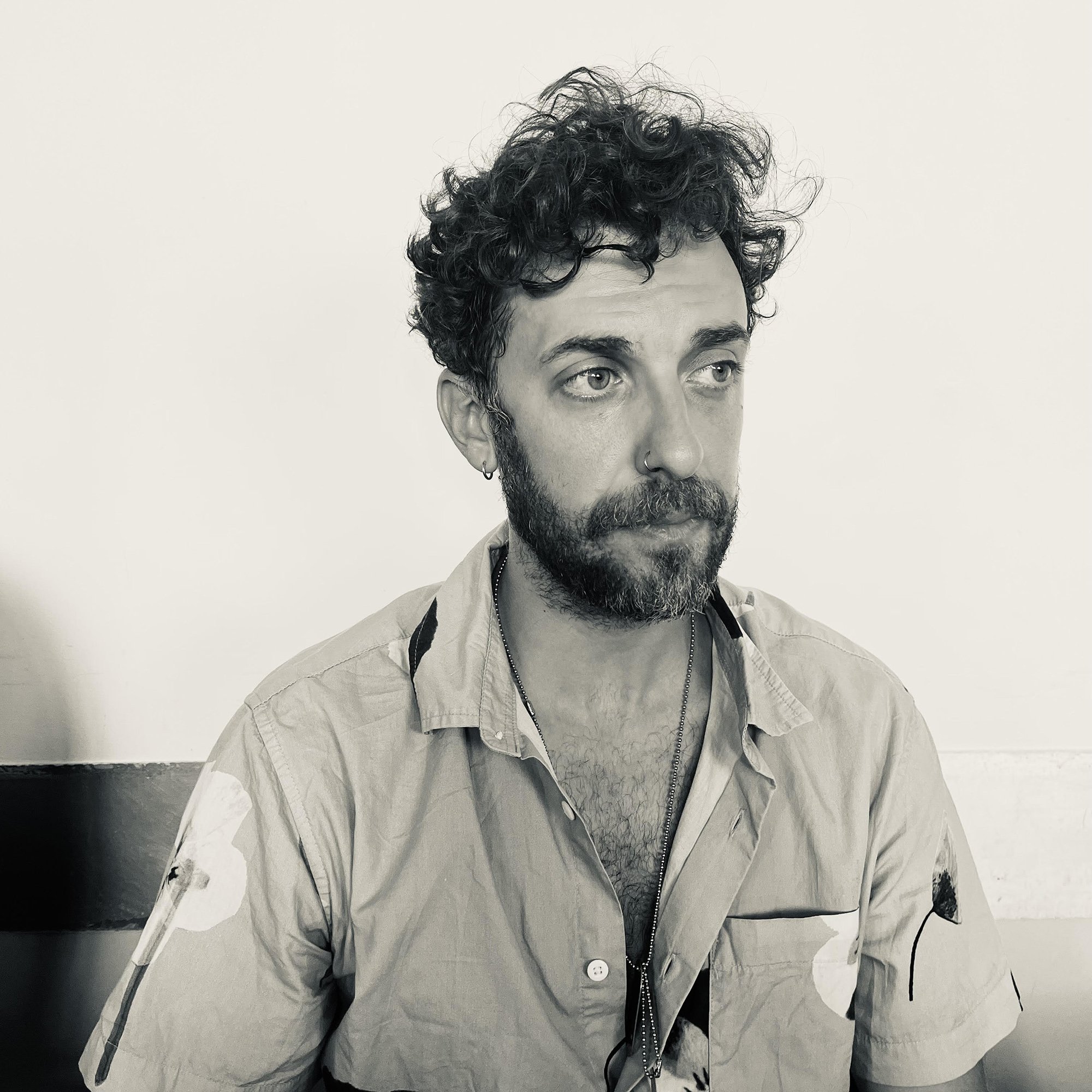Waiting for Nasrallah
The secretary-general of Hezbollah has not yet delivered a clear intent to open up a second front in the war in Gaza. But a wider war is still possible.
DECEMBER 1, 2023
State of the World features occasional dispatches on the latest news, events, and ideas. To receive these updates directly in your inbox, sign up for our newsletter.
✺
This week, Justin Salhani is reporting from Beirut, Lebanon.
Supporters listen to a speech by Hezbollah leader Sayyed Hassan Nasrallah via video link, during a ceremony marking the “Hezbollah Martyr Day,” in the southern Beirut suburb of Dahiyeh, Lebanon. Saturday, Nov. 11, 2023. (AP Photo/Hassan Ammar)
1.
Since October 7, many have wondered whether Hezbollah, a Lebanese political party with a sophisticated armed wing, will open up a second front in the war in Israel and Palestine, attacking from the north. The border with Israel has already become the site of violence: 14 Lebanese and three Israeli civilians have died.
Hezbollah occupies a unique position in Lebanese politics. They are both a political party and a fighting force. They hold an arsenal of thousands of weapons, making them the world’s most military well-equipped nonstate actor. But despite their participation in electoral politics, Hezbollah is often described as “a state within a state” for providing medical and social services to its support base that the state does not. In contemporary Lebanon, which has been without a president since October 2022, they have both the means and the autonomy to engage in war.
As those who live near the border wait to see if the current Hamas-Israel pause will turn into something more permanent, many in Lebanon are left in limbo about who will make decisions for the country, and what form those decisions will take.
Hezbollah, like Hamas, is part of the loose-knit network of allies and proxies that Iran calls its Axis of Resistance. Founded in the 1980s as a Shiite Islamist resistance movement to the Israeli occupation of southern Lebanon, the Iranian-funded group has since evolved into a domestic political behemoth and become a regional player, intervening in the Syrian Civil War on the side of the Assad regime and training Iranian-proxies in Iraq and Yemen. Hezbollah’s military capabilities surpass that of the Lebanese Armed Forces. Many nations, including the United States, also consider them a terrorist group.
As those who live near the border wait to see if the current Hamas-Israel pause will turn into something more permanent, many in Lebanon are left in limbo about who will make decisions for the country, and what form those decisions will take.
When the Lebanese Civil War ended in 1990, Hezbollah was the only militia to keep their weapons. But Hezbollah aren’t only a guerrilla fighting force. They are also a well-run political party that has participated in Lebanese parliamentary elections since 1992. Hezbollah members also manage two ministerial portfolios in the Lebanese caretaker government and hold 13 seats in parliament.
That independence from the Lebanese state extends to Hezbollah’s military decisions. In parts of Lebanon, there exists what the analyst Aram Nerguizian calls a “military dualism” where the Lebanese Armed Forces (LAF) and Hezbollah both operate, though not necessarily as equal partners. In 2017, for instance, the LAF launched a successful operation against the Islamic State in Iraq and Syria (ISIS) who had overran a Lebanese town on the Syrian border. Hezbollah then unilaterally negotiated ISIS’s withdrawal, took credit for the LAF’s success and spread a narrative that there had been coordination between LAF and Hezbollah cadres. But in southern Lebanon, there is no duopoly. Hezbollah acts alone. The rest of Lebanon is in its hands.
As news of Hamas’s attack in Israel on October 7 reached Lebanon, a tension fell over Beirut. People started to make contingency plans — packing ‘go-bags’, booking tickets abroad, or stocking up on dried goods and water. Every loud noise — a motorized scooter backfiring or fireworks — elicited a nervy reaction.
The reaction came soon. October 8, Hezbollah hit an Israeli-occupied area called Shebaa Farms, which Lebanon and Hezbollah both consider its land. Israel hit back and the two sides began trading rocket and artillery fire across the Lebanon-Israel border. The attacks grew in width and scope.
More than 46,000 residents of southern border towns fled north in the weeks after October 8. In Rmeish, a border town of around 10,000 people, half the population left. Those with means or family near Beirut went to stay there. Those from other southern towns with nowhere to go gathered in community centers in Tyre, 12 miles from the border with Israel, where resources are depleting rapidly.
“We don’t have enough medicine or even a hospital nearby,” Milad El Alam, Rmeish’s mayor, told me over the phone, exhaustion seeping into his voice. He, too, fled north to wait out this uncertain period.
By the next week, the impacts of the war in Gaza were already starting to be felt in Lebanon. At the beginning of the war, some in Beirut were itching for a fight. On October 14, I approached a well-built man in his 30s smoking at a small cafe. He was smoking a water pipe, what’s locally known as an argileh. “God willing we will enter the war, be victorious and take Palestine,” he told me between puffs. He refused to say any more than that, to give his name, profession, or any personal details. He sat under a framed image of Hassan Nasrallah, Hezbollah’s secretary general.
As the death toll in Gaza continued to rise, protests of rage and disgust broke out in Lebanon’s major cities. A number of Palestinian and Lebanese parties, including Hamas, Islamic Jihad, Hezbollah and their allies Amal, and the Syrian Social Nationalist Party mobilized their supporters to gather outside the road leading to the U.S. Embassy, north of Beirut on October 18. Security forces set up a large security fence, which young men in traditional Palestinian scarves climbed over. They threw water bottles and rocks at the security forces on the other side who responded with tear gas.
Many of the young men are from Palestinian refugee camps from the north, about a two-hour drive away. One of them rubbed tear gas from his eyes. He told me that he was a Palestinian refugee in his early twenties, there to protest America’s staunch support for Israel. Part of him, he said, wanted to break through the barrier to enter the embassy and ‘خرب الدينه kharreb el-dineh,’ which translates to ‘cause havoc or chaos’ but literally means to ‘destroy the world.’
“They’re killing women and children,” said Ahmad Sayed, another young man from the Palestinian refugee camp of Nahr el Bared in north Lebanon. “The U.S. can stop this. They need to stop what’s happening.”
A group of police watched the event calmly from a nearby hillside, just out of reach of the teargas. One made eye contact with me and motions to the chaos nearby, “it’s normal,” he said.
2.
On October 21, I met with a caretaker minister whose party is a close ally with Hezbollah. Seated on a chair in his Beirut office, he fiddled with prayer beads as he explained how unprepared Lebanon is for a wider war. Lebanon has been without a president for the last year. Until one is elected, the current government acts in a caretaker capacity. The caretaker government still meets, and political figures like Najib Mikati, the caretaker prime minister, and Walid Jumblatt, an influential politician, have tried to make it clear that many in Lebanon do not want war. Lebanon’s parliament granted this government the power to run Lebanon. But when it comes to war with Israel, Hezbollah will work outside Lebanese law.
Many in Lebanon recall July 2006, when Hezbollah and Israel fought a wider war. At 9 am on July 12, 2006, Hezbollah fighters entered Israel and attacked an Israeli convoy. They killed three Israeli soldiers and took two others hostage with the aim to exchange them for Lebanese prisoners in Israeli jails. The 34-day war that followed killed more than 1,100 people, mostly Lebanese civilians, and left nearly a quarter of Lebanon’s population displaced. Public infrastructure were badly damaged too. Arab states pledged around 1.1 billion dollars to pay for much of the reconstruction. For Hezbollah and their supporters, the group had gone head-to-head with the region’s most fearsome and well-funded army. Their survival was reason enough to declare victory.
Since then, Hezbollah’s arsenal has grown to more than 100,000 rockets, most of them given by Iran. Nasrallah said in 2018 that if Israel starts a war it will “face a destiny and reality it didn’t expect.” In recent months Israeli officials respond by namedropping Beirut in their macabre threats. Israel’s Defense Minister, Yoav Gallant, said in August if a war breaks out, he won’t hesitate to “return Lebanon to the stone age.”
At the same time, Lebanon has gone through a severe economic crisis. In 2019, Lebanon devalued its exchange rate by 90 percent, leaving the local currency far below market value, while strict banking controls aimed at protecting bank owners mean people still can’t access their savings. Important foreign aid from certain major backers has dried up, too.
Who will rebuild Lebanon this time? the minister asks. It is a rhetorical question: He knows all too well that there would be no one left to take up the task.
3.
Everyone in Lebanon is watching the war unfolding in Gaza. But few are affected more by the events than Lebanon’s Palestinian refugees. The Burj el Barajneh and Chatila Palestinian refugee camps were founded in the wake of the establishment of the state of Israel in 1948 and the mass displacement and dispossession of Palestinians known as the Nakba, or ‘catastrophe’ in Arabic. Palestinians in Lebanon are allowed freedom of movement but many are sentenced to poverty by the state. They cannot own property or access jobs in many syndicated professions — policies of state segregation driven by resentment from the civil war, when Palestinian militias took part in the fighting.
On October 24, the camps were in a somber mood. Their televisions flashed with bloodied corpses being pulled from rubble, mangled bodies of children, or announcements of entire bloodlines being wiped out by Israeli airstrikes. Horrific images are not foreign to the residents of the Chatila camp. In 1982, a massacre by Lebanese Christian militias, backed by Israel, murdered hundreds and potentially thousands of Palestinian and Lebanese Muslim men, women and children. Many people disappeared. Nobody knows the exact number of victims. One survivor I spoke to that day said they didn’t hear gunfire because the militia used knives or machetes to kill.
Most of the camp’s residents were born and raised in Lebanon. Some hope to leave to Europe or Canada where they can raise their kids with dignity. All of them retain hope that they will see Palestine in their lifetime. Views on Hezbollah among the Palestinian refugees in Lebanon differ, sometimes even in immediate families. Some feel they are the only real supporters of the Palestinian cause in Lebanon, while others feel their cause is being politically manipulated.
4.
Hezbollah’s strategy, according to various analysts I spoke to, is to divide the Israeli military’s attention. By attacking their enemy’s northern border, Hezbollah reasons, Israel can’t focus their full arsenal on Hamas in Gaza. If Israel takes out Hamas, Hezbollah fears — rightly or wrongly — that southern Lebanon could be next. Hezbollah and Hamas are strategic allies — they share a common ally in Iran, a common enemy in Israel, and they keep close communication with one another. Hezbollah believes that with Hamas out of the way, Israel would turn their fighting power north due to a mix of expansionist ideology and a desire to see Hezbollah wiped out.
“Hezbollah’s response will not be based on a massacre in Gaza,” Amal Saad Ghorayeb, author of the book Hizbu’llah: Politics and Religion, told me. “It’s not just about Palestinian solidarity but about self-defense and national security. These are strategic calculations.”
When Nasrallah announced he would give a speech on a Friday, November 3, many in Lebanon feared he would announce an expansion of operations. Many shop owners decided to close early, either to watch the speech or to avoid what they fear would come after.
But Nasrallah’s speech was anticlimactic. “They are saying we will announce we will enter the war,” Nasrallah said. “We entered the battle on October 8th.” He said Hezbollah’s military strategy would reflect Israel’s decisions in Gaza and on the border with Lebanon. But he did not deliver a clear intent to escalate that many feared and some hoped for.
Since October 8, Hezbollah says they’ve lost 85 fighters. Israel says they’ve lost six soldiers and three civilians in the fight against Hezbollah. Hezbollah, meanwhile, claims they’ve killed or wounded over 120 Israelis. Both sides have avoided crowded urban areas. Still, 14 civilians have been killed in Lebanon, including three journalists.
Nasrallah spoke again on November 11 and said that Hezbollah will stop fighting when the U.S. ceases the aggression on Gaza. On November 20, an Axios report from Israel said the U.S. administration is concerned “Israel is trying to provoke Hezbollah and create a pretext for a wider war in Lebanon.” In a call with U.S. Secretary of Defense Lloyd Austin, his Israeli counterpart Yoav Gallant reportedly said he didn’t think Israel would open a second front with Lebanon, but that Hezbollah was “playing with fire.” After the Israel-Hamas ceasefire began on November 23, tensions between Israel and Hezbollah calmed. But there were reports of Israel firing on southern Lebanon in spite of the ceasefire on November 25 and 28. On November 30, the Israeli military said it intercepted an “aerial target” that crossed from Lebanon.
In Beirut, residents have settled into an uncomfortable normality. A wider war that consumes the capital is still possible. Analysts tell me Hezbollah’s calculus hasn’t changed. They’re ready to fight if provoked but they don’t want to be seen as instigators.
Near Beirut’s seafront, Reda Bazzi climbed down from a ladder. He had been repairing the entrance to the local office of the Amal Movement, a Hezbollah ally, and took a seat on a plastic chair.
“Nobody knows what will happen,” Bazzi told me. His family is from Bint Jbeil in south Lebanon but most of his relatives fled north. “Every day, we wait to see.”





